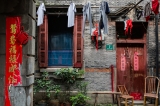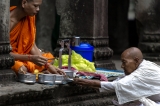June 29th, 2012 — 10:27am
Following the first opium war which ended in 1842, the British opened a concession in Shanghai by way of a forced treaty with the Qing Dynasty. Each concession within the city was governed by an occupying country, namely the Brits, the French, and the Americans. Fuelled by international trade in silk, tea and porcelain, Shanghai
June 28th, 2012 — 10:27am
One of the many things I love about my work is the contrast. Last week I was in rural Chiang Rai photographing rice planting, the next in a bustling metropolis. I’ve just returned from Shanghai. Although time was short I did manage to discover a few of the city’s more interesting areas and photograph its
June 18th, 2012 — 11:41am
I’ve just returned from four days in Phayao near Chiang Rai in northern Thailand where I was on a photo-assignment for an international grower and exporter of organic rice. With the rainy season in full swing, it’s time for farmers to uproot the seedlings from the nursery beds and replant in the flooded paddy fields.
June 12th, 2012 — 10:01am
It has been disturbing to witness what has happened to Angkor over the last few years. Even now with the rainy season in full swing visitor numbers are still high. As one hotelier said to me, ‘for the Chinese and Koreans there is no low season’. Nevertheless, the next month or two is without doubt
June 10th, 2012 — 7:58pm
Apsaras are alive and well in modern-day Cambodia and can often be seen posing for tourists at Angkor highlights, Angkor Wat and the Bayon. Even celestial nymphs need to earn a crust and charge tourists a dollar a pop to be snapped with them. It’s all very much part of the circus that Angkor has
June 10th, 2012 — 7:29pm
Visitors to Cambodia soon add a new word to their vocabulary – Apsara. Often appropriated as a name for resorts, travel companies, and restaurants, Apsaras are mythical female celestial dancers that graced the walls of Angkor-era temples as early as the 8th century AD. Scholars of Khmer art and archaeology often differentiate between the sensual





